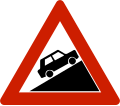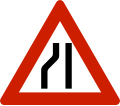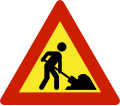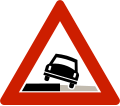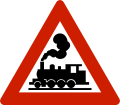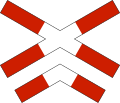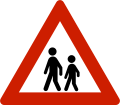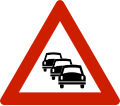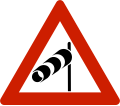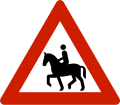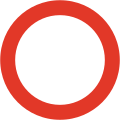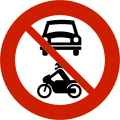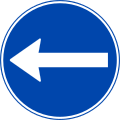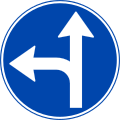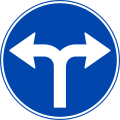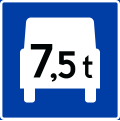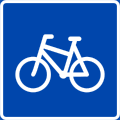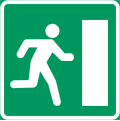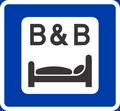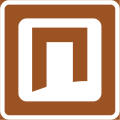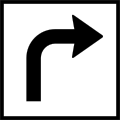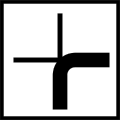
Road signs in Norway are regulated by the Norwegian Public Roads Administration in conformity with the 1968 Vienna Convention on Road Signs and Signals, to which Norway is a signatory.
Contents
- Warning signs
- Priority signs
- Prohibitory signs
- Mandatory signs
- Informative signs
- Service signs
- Direction signs
- Supplementary signs
- Marker signs
- Historic signs
- 1938 road signs
- 1974 road signs
- Notes
- References
Signs follow the general European conventions concerning the use of shape and colour to indicate function. Any text included on supplementary signs will normally be in Norwegian, but may in some cases be bi- or trilingual. In Northern parts of Norway, municipal and informative signs may be printed in both Norwegian and Sami. Close to the Finnish border and in municipalities with significant Norwegian Finnish population signs and village names are also shown in Finnish. In areas close to the Russian border, signs may be written in both the Latin and Cyrillic scripts.
No more than three signs (road number indications excepted) may be mounted on any one pole, with the most important sign appearing at the top. As is customary in European countries, all signs are partly or fully reflectorized or are provided with their own night-time illumination.
The current set of designs were introduced through a reform that went into effect on 1 June 2006, replacing the old sets from 1967 and 1980. As the law outlining this reform was published on 7 October 2005, some signs were already replaced before the law went into effect. The most notable change was the removal of hats and hair on the stickmen making them gender-neutral, but many signs were redesigned or introduced for the first time. [1] [2] [3] In 2022, the meanings of a number of signs were modified to include or exclude users of electric scooters from the regulations they impose. [4]
Norway signed the Vienna Convention on Road Signs and Signals on December 23, 1969 and ratified it on April 1, 1985. [5]




